![]()
In Nick's post "Goodbye USA" Nick and I touched upon some issues relating to different but important aspects of the Hyperstitional program: prophecy, belief, and number. Below are the two entries from that post and what follows are some preliminary thoughts and questions designed to provoke some discussion on these key issues and thus the Hyperstitional program.
__________________________________________________________________
Is prophesizing hyperstitional? Guess that would depend on whether prophesizing can bring about the reality of what is prophesized. Yet how would this possibly occur? Through stimulating belief in masses? Whether this is the correct formulation of "fictions that become real" - ie. reality emerging through generation of *belief* - there would seem to be a limit to the extent to which belief can affect the advent of natural phenomena, such as tidal waves.
So to tease out, firstly how is prophecy related to hyperstition? A theory of hyperstition must account for belief. Secondly, where are the outer limits of hyperstition - is it possible to have a hyperstitional earthquake?
Posted by: Tachi at March 30, 2005 07:27 AM
My latest on this (should be implexed into a carrier of course): The crux of hyperstitional consistency, when reached, will address ('resolve'?) the basic problem of the philosophy of mathematics -- why do mathematical patterns prove so applicable to empirical reality? (OK, sure I've phrased that totally craply, but carry on ...) Hyperstition thus achieved would forestall the continuous relapse into atavistic Platonism that typically bedevils the issue (without obviously subsiding into some kind of Humean fuzz on the other side). That's to say, hyperstition postulates an as-yet uncondensed materialist response to the intrinsic 'realism' of numbers without sacrificing either mathematical exactitude (/infinitude) or the resilient non-ideality (empiricity) of nature.
It is from this 'crux' (= time disturbance) that your question about self-fulfilling prophecy and its limits could be adequately addressed, since these q.s concern the efficient interlinkage of mathematical intelligence (or at least pop-nomic culture) and natural causality - hence their proximity to (and the necessity of an adamant refusal of) speculative religious ideas.
The D&Gon War Machine is one postulated interchange mechanism situated in this hyperstitional space, for instance, converting its numbering pragmatics into vortical 'physics'. On my extremely tenuous understanding of Laruelle, his 'science' (= 'man') satisfies the same function.
Can Numbers (not 'quantities') cause an earthquake? Hoping the H. jury still out on this ...
Posted by: nick at March 30, 2005 08:27 AM
__________________________________________________________________
1. If the value of Hyperstition is in its (as-yet unreached) resolution of the question why "mathematical patterns prove so applicable to empirical reality" then interesting things follow. I accept that such a resolution of the philosophical issue of number would need to maintain mathematical exactitude and empiricity.
2. But how is this related to the 'propagation of fictions that become real' - indeed, how is this necessarily related to the program of H-propagation? It doesn't seem clear how H-propagation, as an activity, has to follow from a rigorous theory of number. H-propagation is a chosen micropolitical program based on motivations quite independent from a philosophical understanding of number, is it not?
3. This may be the connecting point I am missing: what is "this 'crux' (=time disturbance)"?
4. I am interested in dilineating the effective space within which Hyperstition can operate - can Hyperstition cause a natural disaster? - but think the primary issue needs to be to clarify a concept of Hyperstition in relation to conscious / unconscious activity, and belief / unbelief. This clarification rests upon a deeper clarification of Hyperstition in relation to social / natural systems. This, I anticipate Nick saying, in turn boils down to number.
5. Let's come back to this. But first let's return to what I considered Hyperstition's starting point: Hyperstition as the phenomena of "fictions that make themselves real". I guess this is pretty misleading. This formulation tempts one to reduce Hyperstition to the level of human agency, in that fictions are products of human beings that later in time become actualised. It seems to automatically limit the notion of hyperstition within the human / social sphere of activity, which is why we are tempted to ask questions relating to the importance of belief and consciousness. But I guess this is all very diversionary from the real core of Hyperstition, which is number.
6. Hyperstition might in one sense be considered very human, social and based upon the collectivity of individual's beliefs. But if hyperstition is to appreciate a philosophy of number, then questions of belief, consciousness etc miss the point, or at least some of the point. In all natural (or 'material') systems, including geological, biological, social systems, debates about the empirical mode of self-reinforcing reality production (help for better phraseology please) have to deal with questions deeper than those relating to belief and consciousness.
7. Hyperstition as the process of 'fictions becoming real' is thus limited to the human level of reality, when this itself requires greater explanation at a base material level, so its misleading to talk of 'fictions' at all. What we are looking for, whilst fumbling for a rigorous and exact theory of number, is a non-anthropomorphic concept of speculation or anticipation, in which the expectations of artificial agencies may play a role in causing the effects anticipated.
8. This is more about grasping a concept of systemic self-reinforcement than playing around with fictions. Creating 'carriers' to propagate fictions and hoping they become real seems pretty naive in the context of the far more ambitious program of grasping the numeric quality of reality production and the non-anthropomorphic characterization of expectation and therefore artificial agency.
9. Should Hyperstition not start from number and micropolitical programs proceed from there? Is it not too early to say what the best micropolitical path would be without first resolving the question why "mathematical patterns prove so applicable to empirical reality"?
Download it before Undercurrent changes his mind and gives it to greedy publishers.
Finally returned home and fully online.
Still 6 hours to the Persian New Year but anyway, Happy Norooz to all.
(Personal commentary: hate that line about awakening the good)
PS. I will try to post a boring article very soon.
PPS. There is a v. interesting draft post in MT control panel; Mark is that yours? If your answer is positive, I have some archeological materials and minor corrections for you.
PPPS. Someone awakens Dread from its untimely slumber.
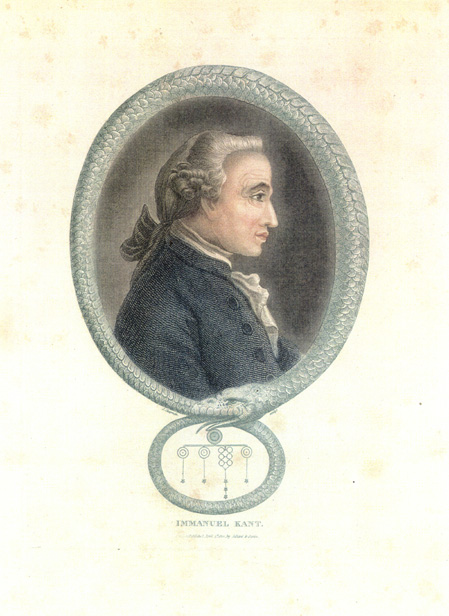
'Templeton sits immobile in his attic room, immersed in the deceptively erratic ticking of his old nautical clock, lost in meditation upon JC Chapman's hermetic engraving. It now seems that this complex image, long accepted as a portrait of Kant, constitutes a disturbing monogram of his own chronological predicament. As if in mockery of stable framing, the picture is surrounded by strange-loop coilings of Ouraboros, the cosmic snake , who traces a figure of eight - and of moebian eternity - by endlessly swallowing itself. Suspended from its lower jaw is a cryptic device of intricately balanced circles and stars (ancient symbols of the AOE). Above the sepent's head, a facsimile of Kant is etched in profile, the face fixed in an amiable - if distant - expression. What was it though, that hid behind the death-mask, where it cut-off, below and behind the jaw, false ear, and double hair-line? What was this peculiarly formless body, shadowy neck-flesh, and suggestion of a cervical fin? As he stared, and hideously remembered, Templeton felt as though he knew.'
- Ccru, 'The Templeton Episode'
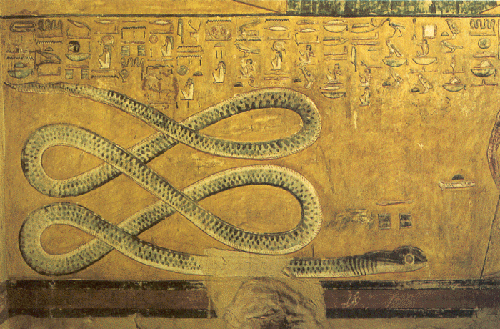
'After a time the boat floated through a dim gate flanked by two sarcophagi as tall as telephone poles, and the shore figures on the other side were screaming and shifting from side to side along the shore and over their frightened cries he could hear a slow metallic slithering. ‘Apep!’ the ghosts were shouting. ‘Apep!’ And then he saw a shape of blackness rising and it was the head of a serpent so vast that it dwarfed their freakish boat. Man-shaped forms dangled from its jaws, but it shook its ponderous head, sending them spinning away, and arched slowly towards the river.
“The serpent Apep,” whispered Romanelli, “whose body lies in the deep realms of the keeku samu where pure darkness becomes an impenetrable solid.” '
- Tim Powers, The Anubis Gates, 452
'One is ... tempted to see in the 'time paradox' of science-fiction novels a kind of "apparition in the Real" of the elementary structure of the symbolic process, the so-called internal, internally inverted eight: a circular movement, a kind of snare where we can progress only in such a manner that we 'overtake' ourselves in the transference, to find ourselves later at a point which we have already been. The paradox consists in the fact that this superfluous detour, this supplementary snare of understanding ourselves ('voyage into the future') and then reversing the time direction ('voyage into the past') is not just a subjective illusion/ perception of an objective process taking place in so-called reality independent of these illusions. The supplementary snare is, rather, an internal condition, an internal consituent of the so-called 'objective' process itself: only through this additional detour does the past itself, the 'objective' state of things, become retroactively what it always was.'
- Zizek, The Sublime Object of Ideology, 57
'Steampunk is a form of theodicy.'
- John Clute
Tim Powers' The Anubis Gates is a fabulously inventive variation on a time-travel theme.
The model is not the straightforward (or rather straightforward and straightbackward) structure established in Wells' founding text of the sub-genre Time Machine. Instead, The Anubis Gates follows the formal structure of the time (travel) paradox perfected by Robert Heinlein in stories such as 'All You Zombies' and 'By his Bootstraps'. The template for this kind of paradox narrative lies on the hinterlands between SF, Fantasy and Horror where Lovecraft's The Shadow out of Time and Through the Gates of the Silver Key can be found. But if those stories show the closed loop of chronos opening out into 'the unutterable Abomenon of the Outside (Nihil Ulterius)', then Heinlein and Powers merely trace the coils of ouroboros. The Anubis Gates confirms Zizek's claim that the closed loop paradox, far from threatening the collapse of chronic temporality, is the structure of the (Symbolic, Architectonic) Order itself.
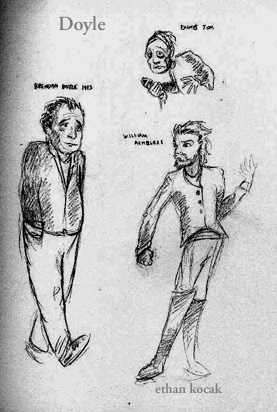
In The Anubis Gates, the academic Brendan Doyle is lured into a time-travel experiment by the eccentric plutocrat Clarence Darrow. Darrow is dying, and, whilst undertaking the prodigious and apparently deranged research he has pursued in a desperate bid to prolong his life, he comes upon the story of 'Dog-Face Joe' amongst the folklore of London in the early years of the nineteenth century. By a process of diligent scholarship and daring supposition, Darrow determines that Joe was a magician capable of transferring his consciousness from body to body, but whose body-stealing had an unfortunate side-effect: almost immediately Joe enters it, the purloined body grows profuse, simian-like hair, so that its new owner is forced to discard it very soon after switching into it. For obvious reasons, Darrow wants to acquire the secret of this profane transmigration, and he seems to have the means to make contact with the body-switching magician since his research has uncovered 'gaps' in the river of time, gates through which it is possible to pass into the past. Doyle's role is to act as a kind of literary tour-guide for the ultra-wealthy time travellers Darrow has assembled, attracted by the possibility of seeing a lecture by Coleridge, and whose million dollar fee will finance the trip.
Very soon after arriving in the nineteenth century, Doyle is abducted into a rhizomic underLondon that is part Oliver Twist, part Burroughs' The Western Lands. Powers' phantasmagoric London - the apocalyptic vividness of whose rendering led John Clute to the describe The Anubis Gates as 'Babylon-on-Thames punk' - is the site for a war between the forces of Egyptian polytheistic sorcery and the grey positivism of British Empire/empircism, involving romanys, ka duplicates, poets, beggars, costermongers, male impersonators....
After a while, Doyle comes, reluctantly, to accept his (literary) Fate - to be propelled, by means of SF, into the nineteenth century picaresque - and more or less gives up any hope of returning home. He resigns himself to make the best of his nineteenth century life and decides that his most realistic hope of an escape from beggary is to make contact with William Ashbless, the minor poet in whose works he has specialist knowledge.
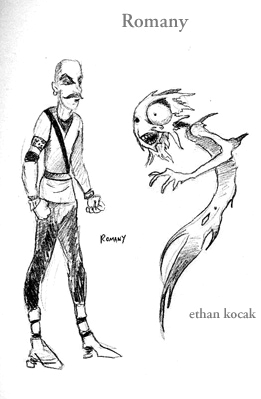
Doyle goes to the Jamaica Coffee House on the morning in which, according to Ashbless' biographer, the American poet will write his epic poem, 'The Twelve Hours of the Night'. The appointed time arrives, but there is no sign of Ashbless. While he waits, at first agitated and then deflated, Doyle idly transcribes 'The Twelve Hours of the Night' from memory.
He is soon caught up in more intrigue and, for a while, forgets about Ashbless. In one of the most uncanny moments in the book, Doyle hears, or fancies he hears, someone whistling The Beatles' 'Yesterday'. It is only after he catches the refrain being whistled again a day or so later that he is able to confirm that there are indeed a group of twentieth-century temporal emigres living in 1810 London. They turn out to be Darrow's people, given the task of helping in the search for Dog Face Joe. Doyle meets with one of them, his former student, Benner, who by now is a paranoid and grizzled wreck, convinced that Darrow is out to kill him. He and Doyle agree to meet again a few days later, but when they do, Doyle finds his fomer friend's behaviour is even odder than before. Doyle discovers the reason for this too late. Benner's body has been acquired by Dog Face Joe. This becomes clear to Doyle only when he finds himself in Benner's body, after it has been discarded by Joe.

Everything is now in place for the revelation that shocks Doyle but which is, by now, no surprise at all for the reader: Doyle IS Ashbless. Or rather: there is no Ashbless (except for Doyle). Doyle only begins to process the full implications of this when he contemplates the peculiar (a)temporal status of the 'Twelve Hours of the Night' manuscript.
“It hadn’t […] come to too much of a surprise to him when he’d realized, after writing down the first few lines of ‘The Twelve Hours of the Night’, that while his casual scrawl had remained recognizably his own, his new left-handedness made his formal handwriting different – though by no means unfamiliar: for it was identical to William Ashbless’. And now that he’d written the poem out completely he was certain that if a photographic slide of the copy that in 1983 would reside in the British Museum, they would line up perfectly, with every comma and i-dot of his version perfectly covering those of the original manuscript.
Original manuscript? He thought with a mixture of awe and unease. This stack of papers here is the original manuscript… it’s just newer now than it was when I saw it in 1976. Hah! I wouldn’t have been so impressed to see it then if I’d known I had made or would make those pen scratches. I wonder when, where and how it’ll pick up the grease marks I remember seeing on the early pages.
Suddenly a thought struck him. My God, he thought, then if I stay and live out my life as Ashbless – which the universe pretty clearly means me to do – then nobody wrote Ashbless’ poems. I’ll copy out his poems from memory, having read them in the 1932 Collected Poems, and my copies will be set in type for the magazines, and they’ll use tear sheets from the magazines to create the Collected Poems! They’re a closed loop, uncreated!… I’m just the …. Messenger and caretaker.” (330-331)
Like his unhappier time-displaced fellow, Jack Torrance, Doyle has always been the caretaker (and nothing but?)

Fictionally speaking, the 'Twelve Hours of the Night' is another kind of duplicate, since a similarly atemporally insistent text (in this case a notebook) is at the heart of Heinlein's 'By His Bootstraps'. The concept of such a text originates, though, not in SF but in Leibniz's demented rationalism. To illustrate his claim that 'we cannot find in any of the individual things, or even in the entire collection and series of things [of the universe], a sufficient reason for why they exist', Leibniz offers the following analogy:
'Let us suppose that a book on the elements of geometry has always existed, one copy made from another. It is obvious that although we can explain a present book from the previous book from which it was copied, this will never lead us to a complete explanation, no matter how many books back we go, since we can always wonder why there have always been such books, why these books were written, and why they were written the way they were. What is true of these books is also true of the world, for the state which follows is, in a sense, copied from the previous one, though in accordance with certain laws of change.' ('On the Ultimate Origination of Things')
Rehearsing the logic of Aquinas' cosmological argument, Leibniz's conclusion is that there then must be 'One Being who rules the universe...[and who] fashions and creates it', a Being which 'is above the world, and, so to speak, extramundane, and therefore ... is the ultimate origin of everything.' As Russell and others have pointed out, though, this 'proof' of the existence of Jahweh is anything but: it merely sets up the bad infinity of transcendence, which is always pseudo-transcendence, since every attempt to posit 'an Ultimate Origin of Things', a meta-level above all meta-levels, the set of all sets, is destined, by its very nature, to fail. There is no better statement of this than Douglas Hofstadter's in Godel, Escher, Bach:
'Achilles: ... You mean that GOD sits up at the top of the ladder of djinns?
Genie: No, no, no! There is nothing "at the top", for there is no top. That is why GOD is a recursive acronym. God is not some ultimate djinn: GOD is the tower of djinns above any given djinn. (114)'
This shifts us from the transcendementia of the cosmological argument to that of the ontological argument, which, as Brian McHale argues in Postmodernist Fiction is 'grotesquely parodied' by Beckett in The Unnamable.
'God is that than which nothing greater can be thought, said Anselm. Now if that than which no greater can be thought existed only in the mind, then a greater could still be thought after all, namely a being who existed in extramental reality. Therefore, so runs the syllogism, God must exist not only mentally but also in reality. The Unnamable parodies this astonishing feat of pulling-oneself-up-by-one's-boot-straps by showing that no matter how "high" his imaginings go, no matter how many recursive authors and authors-above-authors he projects, he can never get outside of his own imaginings to the reality of his ultimate creator. There is an absolute "ontological" ceiling which retreats as he approaches it.' (13)
The ontological problem in The Anubis Gates is quite different of course.
The ontological scandal presented by Ashbless' collected poems is not that there is some 'ultimate creator' which cannot be reached, but very much to the contary: the ex- or rather IN-sistence of the poems establishes that they could not have a creator of any kind, only a caretaker-transcriber. And what displaces Leibniz's transcendent God is the 'miracle' - or rather the miraculation (Deleuze-Guattari) - of the appearance-insistence of the Text itself. But, we have to insist, with Lacan, that this is all God always-already was. Or to put it another way, the mono-theistic God IS the always-already.
That is what Lacan establishes in his typically gnomic reading of 'Moses and Monotheism'. 'The Death of God' (in the seminar on The Ethics of Psychoanalysis) does little more (but this is vast) than slavishly draw out the implications of Freud's rigorous demonstration that the foundation of mono-theism IS the destruction of all foundations. When the beta males rise up to kill Pere Jouissance (the alpha male 'father who enjoys'), they find, to their horror, that, ar from having access to the unlimited enjoyment that they imagined was available to the patriarch, they occupy the position of the always-already mortified, the scions of guilt-plague: in other words, the role of the big Other itself. Jahweh never exists, he insists (in the troubled unconscious of his usurper-propagators). Jahweh is never present, he persists (through his absence, not only maintaining but defined by what theologians call 'epistemic distance'.)
What makes all this utterly contemporary is the flattening of God into the big Other. Postmodern/ deconstructive negative theology likes to pose as a textualist-relativist deviation from a spectral Orthodoxy that is supposedly characterised by its rigidity and dogmatism. But Freud-Lacan's analysis allows us to see that, just as the homicidal-oedipal apes find there is no God but the space of the absent God which they themselves occupy, so Orthodoxy only persists via its retrospeculative positing in the talmudic quibbling of those who endlessly announce their deviations from 'doxa'. To return to The Anubis Gates: so far as postmodern power goes (it's dead but it lives on - Land) there is there is no orthodoxy, there is only parodoxy.

As Deleuze-Guattari and Zizek both acknowledge, Kafka is the prophet of the already-dead God and the double-binding 'control virus' (Burroughs) in which it is instantiated. Eschatology and the Last Judgement are misdirections, teleological confidence tricks concealing the 'fatal strategies' (Baudrillard) through which Control immanently operates, now. The predicament in which K, as the postmodern subject par excellence, finds himself is not that of someone awaiting judgement, but of someone enduring 'indefinite postponement'. The big Other does not exist, it insists as virtual vampiric structure whenever it lures dupes (us) into endlessly petitioning it for recognition and/or acquittal. It was in this sense that Orson Welles was perfectly right to say that K is 'guilty as hell'. Guilt is the a priori condition for those inserted into the Control machine, whose lineaments were described with terrifying precision by Burroughs, Kafka's real successor. Control precisely does not issue rigid commands, but complementary yet contradictory injunctions, themselves always provisional and 'subject to review'. The coherence of the Control hyper-entity can only ever be virtual; it doesn't pre-exist the subject of Control. Very much to the contrary, it is the very attempt to make sense of the 'obviously' incommensurate and prima facie senseless injunctions it issues that constitute what minimal coherence Control has. As Kafka's hapless peitioner discovers, the door is meant only for you. But behind the door is the metastatic God Over Djinn bad infinity of metanoiac postponement. Ceaseless seamless bad dream corridors.
'We know that Mr D never told any of his agents any more than the uh minimum consistent with the performance of their uh duties and that this Minimum Information - M.I. - was expressed in mathematical formulae. We know that Mr D lied to all his agents. I suggest that he lied to you, doctor. I suggest further that you are not the Mr D. That the Mr D does not in fact exist but is simply the hypothetical quantity at the end of an infininte series of which you and Mr Martin are the uh lower integers.' (Burroughs, 'Ancient Face Gone Out', 18)
That is why the Nietzschean critique of grammatology (we'll never get rid of God until we get rid of grammar) not only fails to move beyond the dead God, it sustains that God in its undeath. Nietzsche's claim, in The Genealogy of Morals that there is no actor-subject behind actions is both too slow and too quick. Too slow, because, as we have seen, the non-existence of the mono-theistic meta-subject is the founding moment of mono-theism. Too quick, because there is, in fact, a subject, albeit one that is only ever empty, 'barred'.
To demonstrate why this is so, we can return (at last!) to The Anubis Gates. What is the difference between Doyle and Ashbless? The quick answer, 'nothing' is tempting, but misleading. Or rather, 'Doyle' is that 'nothing' which is the difference from Ashbless. This 'nothing' is what Lacan means by the barred subject.
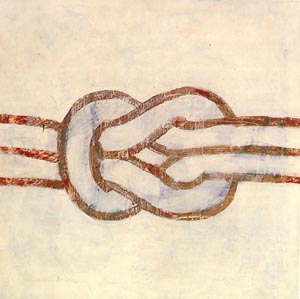
Zizek quite rightly makes the connection between Lacan's famous slogan 'the letter always reaches its destination' (from Seminar XI's epochal 'The Agency of the Letter and the Unconscious', the reading of Poe's 'The Purloined Letter') and time paradox stories. As he explains, at one level, 'a letter which always arrives at its destination points at the logic of recognition/misrecognition (reconnaissance/méconnaissance) elaborated in detail by Louis Althusser and his followers (e.g. Michel Pęcheux): the logic by means of which one mis/recognizes oneself as the addressee of ideological interpellation. This illusion constitutive of the ideological order could be succinctly rendered by paraphrasing a formula of Barbara Johnson: "A letter always arrives at its destination since its destination is wherever it arrives." Its underlying mechanism was elaborated by Pęcheux apropos of jokes of the type: "Daddy was born in Manchester, Mummy in Bristol, and I in London: strange that the three of us should have met! In short, if we look at the process backwards, from its contingent result, the fact that events took precisely this turn could not but appear as uncanny, concealing some fateful meaning — as if some mysterious hand took care that the letter arrived at its destination, i.e., that my father and my mother met.'
The Oedipal reference here is of course no accident (and part of the point is that the unconscious is rigorously Spinozistic in its rejection of the very category of the accidental; as Freud shows in 'Beyond the Pleasure Principle' the unconscious transforms apparent contingency into metaphysical Necessity via repetition) because the Oedipus myth is itself a closed loop paradox: 'one knows in advance one's destiny, one tries to evade it, and it is by means of this very attempt that the predicted destiny realizes itself.' (Sublime Object of Ideology, 58)
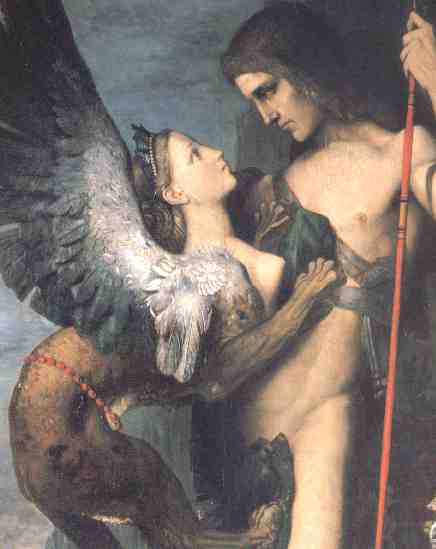
Thus the closed loop time paradoxes in science fiction are in a sense the 'comic' postmodern counterpoint to the closed loops of classical tragedy. What makes the Oedipus myth (post)modern from the start is the fact that, as Alenka Zupancic explains, it is a kind of initation in reverse. Oedipus does not have to struggle to overcome a Female-Thing (the Sphinx yields easily) nor to best an omnipotent Symbolic Father (his father is just a rude old man). Oedipus 'travels the path of initiation (of 'symbolization') in reverse and, in so doing, he experiences the radical contingency of the Meaning borne by the symbolic.' (Ethics of the Real, 192). In other words, instead of first of all experiencing his parents as mighty agents of the symbolic, only to become disillusioned later when he realises that they are 'just people', Oedipus first of all encounters 'mere people' then, only afterwards, realises that these quotidian nothings - these happenstance wretches - were no less than his Mother and Father. Oedipus' problem, then, is that of the always-already dead God, the father who cannot live up to his undead role as Father. 'So THAT was the the father!'
Doyle's initiation is similar but subtly different. The Ashbless Enigma that he encounters first is comically deflated once he realises that - at some level - the solution is only him. 'I wouldn’t have been so impressed to see it then if I’d known I had made or would make those pen scratches.' But the deflation is immediately followed by a profound dread and awe (the poems are uncreated!) that far exceeds his original fascination with the poet.
Once Doyle realises that he is destined to be Ashbless, which is to say, that he always-already was Ashbless, he is posed with a dilemma: does he act in accordance with what he hypostasises as the will of the universe (it is the 'universe' that 'wants' him to live in Ashbless' shoes), or not? The problem that Doyle faces is that the determinism is much harder than a will, even a will that belongs to 'the universe'. What he literally cannot process is that everything he has done as Ashbless has already happened. The barrier that means that this cannot be faced is transcendental: subjectivity as such presupposes the illusion that things could be different. The Kantian demand that we must think of ourselves as if free turns out to be a transcendental law rather than a meta-ethical injunction. To be a subject IS to think of oneself as if free. What sustains this for Doyle is the apparently spontaneously emerging hypothesis of an 'alternative past': in order to hold open the possibility that things might go against the already-recorded Ashbless biography, Doyle is forced to consider the possibility that he has somehow crossed into 'different past' to the one he has seen documented. But the full Zizekian paradox is that it is only Doyle's positing of such an 'alternative past' that ensures that he acts in accordance with what has already happened. The letter always arrives at its destination. Ashbless becomes the hero he already was, the restorer of an Order that was never threatened: the 'harlequinade of magicians and other villains ... know their place', and the 'Adamic Doyle' will have always thwarted the 'generically familiar templates whose attempts to spook England into decline and corruption and despair' (Clute).
The difference between Doyle and (Oedip)us is only that Doyle is more aware of the Necessity that he is (even if such awareness is part of the very Necessity of which it seems to offer knowledge). From the point of view of Spinozism, of course, 'we' are no more 'free to avoid Necessity' than is Doyle. Sub specie aeternitatas, everything has already happened, but we, too, are unable to give up our belief in 'possible worlds', our conviction that things could have been different from what they always had to be.
So it is that the ouroboros coils around us.
'His destiny moves us only because it might have been ours - because the oracle laid the same curse upon us before our birth as upon him. ... While the poet, as he unravels the past, brings to light the guilt of Oedipus, he is at the same time compelling us to recognize our own inner minds...'
Excellent asteroid data site recommended by Northanger.
To quote the immortal Poiet: "It rocks"
In preparation for an extended excursion into xenoplasmic extra-territoriality - on the trail of 'Doctor' Hank H. Hackhammer's 'Shoggothic Materialism' - here are some relevant passages from Lovecraft's epic The Mountains of Madness (with minimal commentary).
A little preliminary context:
"For this place could be no ordinary city. It must have formed the primary nucleus and center of some archaic and unbelievable chapter of earth's history whose outward ramifications, recalled only dimly in the most obscure and distorted myths, had vanished utterly amidst the chaos of terrene convulsions long before any human race we know had shambled out of apedom. Here sprawled a Palaeogaean megalopolis compared with which the fabled Atlantis and Lemuria, Commoriom and Uzuldaroum, and Olathoc in the land of Lomar, are recent things of today - not even of yesterday; a megalopolis ranking with such whispered prehuman blasphemies as Valusia, R'lyeh, Ib in the land of Mnar, and the Nameless city of Arabia Deserta."
Deep inside the ancient catacombs our intrepid explorers are drawn into the intricate dot-patterns that relate the abysmal history of the Old Ones:
"The prime decorative feature was the almost universal system of mural sculpture, which tended to run in continuous horizontal bands three feet wide and arranged from floor to ceiling in alternation with bands of equal width given over to geometrical arabesques. There were exceptions to this rule of arrangement, but its preponderance was overwhelming. Often, however, a series of smooth cartouches containing oddly patterned groups of dots would be sunk along one of the arabesque bands. When cartouches with dot groups appeared - evidently as inscriptions in some unknown and primordial language and alphabet - the depression of the smooth surface was perhaps an inch and a half, and of the dots perhaps a half inch more."
"The things once rearing and dwelling in this frightful masonry in the age of dinosaurs were not indeed dinosaurs, but far worse. Mere dinosaurs were new and almost brainless objects - but the builders of the city were wise and old, and had left certain traces in rocks even then laid down well nigh a thousand million years - rocks laid down before the true life of earth had advanced beyond plastic groups of cells - rocks laid down before the true life of earth had existed at all. They were the makers and enslavers of that life, and above all doubt the originals of the fiendish elder myths which things like the Pnakotic Manuscripts and the Necronomicon affrightedly hint about. They were the great 'Old Ones' that had filtered down from the stars when earth was young - the beings whose substance an alien evolution had shaped, and whose powers were such as this planet had never bred. ... Of course, the infinitely early parts of the patchwork tale - representing the preterrestrial life of the star-headed beings on other planets, in other galaxies, and in other universes - can readily be interpreted as the fantastic mythology of those beings themselves; yet such parts sometimes involved designs and diagrams so uncannily close to the latest findings of mathematics and astrophysics that I scarcely know what to think."
Better not even to mention such things ... "But it had to be; for we could not issue our warning intelligently without the fullest possible information, and the issuance of that warning is a prime necessity. Certain lingering influences in that unknown antarctic world of disordered time and alien natural law make it imperative that further exploration be discouraged."
Been thinking for a while that we need an Antarctic agent.
Shoggoths coming up ...
"It was under the sea, at first for food and later for other purposes, that they first created earth life - using available substances according to long-known methods. The more elaborate experiments came after the annihilation of various cosmic enemies. They had done the same thing on other planets, having manufactured not only necessary foods, but certain multicellular protoplasmic masses capable of molding their tissues into all sorts of temporary organs under hypnotic influence and thereby forming ideal slaves to perform the heavy work of the community. These viscous masses were without doubt what Abdul Alhazred whispered about as the 'Shoggoths' in his frightful Necronomicon, though even that mad Arab had not hinted that any existed on earth except in the dreams of those who had chewed a certain alkaloidal herb."
It has been plausibly rumoured that the 'Mad Arab' Abdul Alhazred (note to Thelemites - 'AL has read') was in fact at least half-Persian and conducted his most notorious sorceries in Qom, prior to being devoured alive by a Shoggoth in the centre of Damascus.
But back to Shoggoths ...
"When the star-headed Old Ones on this planet had synthesized their simple food forms and bred a good supply of Shoggoths, they allowed other cell groups to develop into other forms of animal and vegetable life for sundry purposes, extirpating any whose presence became troublesome. With the aid of the Shoggoths, whose expansions could be made to lift prodigious weights, the small, low cities under the sea grew to vast and imposing labyrinths of stone not unlike those which later rose on land. ... The steady trend down the ages was from water to land - a movement encouraged by the rise of new land masses, though the ocean was never wholly deserted. Another cause of the landward movement was the new difficulty in breeding and managing the Shoggoths upon which successful sea life depended. With the march of time, as the sculptures sadly confessed, the art of creating new life from inorganic matter had been lost, so that the Old Ones had to depend on the molding of forms already in existence. On land the great reptiles proved highly tractable; but the Shoggoths of the sea, reproducing by fission and acquiring a dangerous degree of accidental intelligence, presented for a time a formidable problem."
The bionic tools of an unutterably alien civilization, the 'Shoggoth Mythos' (shared by the Old Ones themselves) is that of autonomizing technology, in which megabacterial technoplasma - owing nothing to a nature that is not already artifice - grope their way to a line of catastrophic escape.
"They had always been controlled through the hypnotic suggestions of the Old Ones, and had modeled their tough plasticity into various useful temporary limbs and organs; but now their self-modeling powers were sometimes exercised independently, and in various imitative forms implanted by past suggestion. They had, it seems, developed a semistable brain whose separate and occasionally stubborn volition echoed the will of the Old Ones without always obeying it. Sculptured images of these Shoggoths filled Danforth and me with horror and loathing. They were normally shapeless entities composed of a viscous jelly which looked like an agglutination of bubbles, and each averaged about fifteen feet in diameter when a sphere. They had, however, a constantly shifting shape and volume - throwing out temporary developments or forming apparent organs of sight, hearing, and speech in imitation of their masters, either spontaneously or according to suggestion."
Bubbling, shape-shifting, imitative, hyperplastic, technobiotic abominations - easy to see why Hackhammer would be so excited by them.
"They seem to have become peculiarly intractable toward the middle of the Permian Age, perhaps one hundred and fifty million years ago, when a veritable war of resubjugation was waged upon them by the marine Old Ones. Pictures of this war, and of the headless, slime-coated fashion in which the Shoggoths typically left their slain victims, held a marvelously fearsome quality despite the intervening abyss of untold ages. The Old Ones had used curious weapons of molecular and atomic disturbances against the rebel entities, and in the end had achieved a complete victory. Thereafter the sculptures showed a period in which Shoggoths were tamed and broken by armed Old Ones as the wild horses of the American west were tamed by cowboys. Though during the rebellion the Shoggoths had shown an ability to live out of water, this transition was not encouraged - since their usefulness on land would hardly have been commensurate with the trouble of their management."
Patience ...
"Decadent though their style undoubtedly was, these latest carvings had a truly epic quality where they told of the building of the new city in the cavern sea. The Old Ones had gone about it scientifically - quarrying insoluble rocks from the heart of the honeycombed mountains, and employing expert workers from the nearest submarine city to perform the construction according to the best methods. These workers brought with them all that was necessary to establish the new venture - Shoggoth tissue from which to breed stone lifters and subsequent beasts of burden for the cavern city, and other protoplasmic matter to mold into phosphorescent organisms for lighting purposes. ... At last a mighty metropolis rose on the bottom of that Stygian sea, its architecture much like that of the city above, and its workmanship displaying relatively little decadence because of the precise mathematical element inherent in building operations. The newly bred Shoggoths grew to enormous size and singular intelligence, and were represented as taking and executing orders with marvelous quickness. They seemed to converse with the Old Ones by mimicking their voices - a sort of musical piping over a wide range ... - and to work more from spoken commands than from hypnotic suggestions as in earlier times. They were, however, kept in admirable control. ... To keep on with the work of the upper world it had become necessary to adapt some of the amorphous and curiously cold-resistant Shoggoths to land life - a thing the Old Ones had formerly been reluctant to do."
Shoggoth surfacing - their becoming terrestrial, or (more exactly) amphibious - seems to fill Lovecraft with obsessive horror.
Suddenly Danforth screams:
"I came only just short of echoing his cry myself; for I had seen those primal sculptures, too, and had shudderingly admired the way the nameless artist had suggested that hideous slime coating found on certain incomplete and prostrate Old Ones - those whom the frightful Shoggoths had characteristically slain and sucked to a ghastly headlessness in the great war of resubjugation. They were infamous, nightmare sculptures even when telling of age-old, bygone things; for Shoggoths and their work ought not to be seen by human beings or portrayed by any beings. The mad author of the Necronomicon had nervously tried to swear that none had been bred on this planet, and that only drugged dreamers had even conceived them. Formless protoplasm able to mock and reflect all forms and organs and processes - viscous agglutinations of bubbling cells - rubbery fifteen-foot spheroids infinitely plastic and ductile - slaves of suggestion, builders of cities - more and more sullen, more and more intelligent, more and more amphibious, more and more imitative! Great God! What madness made even those blasphemous Old Ones willing to use and carve such things?"
Hehehehe ...
"And now, when Danforth and I saw the freshly glistening and reflectively iridescent black slime which clung thickly to those headless bodies and stank obscenely with that new, unknown odor whose cause only a diseased fancy could envisage - clung to those bodies and sparkled less voluminously on a smooth part of the accursedly resculptured wall in a series of grouped dots - we understood the quality of cosmic fear to its uttermost depths."
Dot-speckled Shoggoth nightmares ...
Traumatized beyond the elastic bounds of sanity, Danforth began to behave like a typical Hyperstition commentator:
"He has on rare occasions whispered disjointed and irresponsible things about 'The black pit,' 'the carven rim,' 'the protoShoggoths,' 'the windowless solids with five dimensions,' 'the nameless cylinder,' 'the elder Pharos,' 'Yog-Sothoth,' 'the primal white jelly,' 'the color out of space,' 'the wings,' 'the eyes in darkness,' 'the moon-ladder,' 'the original, the eternal, the undying,' and other bizarre conceptions; but when he is fully himself he repudiates all this and attributes it to his curious and macabre reading of earlier years. Danforth, indeed, is known to be among the few who have ever dared go completely through that worm-riddled copy of the Necronomicon kept under lock and key in the college library."
Before topics wander away from the recent xenotation carnival the contribution from Robin (confusingly/coincidentally 'the other Robin' - not regular numbomechanic uc) on the TX2 thread definitely merits a celebratory post.
[I have taken the liberty to engage in some vocabulary tinkering, so my presentation here is eminently contestable]
By radicalizing the ordinal plexing, used by Barker to convert a binary cumulation semiotic into the original Tic Xenotation, Robin completes the evacuation of all notational elements other than plexing itself. In his new Nullified Xenotation or 'Nullotation' ('0X'), nothing remains except pure plexion, recursive infolding of a desolated protonomic space (an unformed, unrepresentable 'matter'). The initial 'digits' proceed:
[2] ( )
[3] (( ))
[4] ( )( )
[5] ((( )))
[6] (( ))( )
[7] (( )( ))
[8] ( )( )( )
[9] (( ))(( ))
While bound togther with TX by strong formal isomorphy (0X substitutes '( )' for TX ':'), the consumption of unity by zero, and complete break from the privileging of binary powers, opens the exploration of a highly distinctive numerical field - where an immense desolated body without features (fusing 'one' into 'zero') is intricately perturbed by waves, ripples, or foldings to constitute a Natural infinity.
And AQ seems to like it:
(ZERO = UNIT) = TRUE